Search Results for Tag: twitter
Dealing with online errors and corrections

(photo: flickr/Jorge Felipe Gonzalez CC: BY-NC-SA)
Journalists and editors make mistakes no matter how careful they are. It’s standard to publish a printed correction when the error’s in a newspaper article. In the online world though, there’s less consensus on how to handle corrections and clarifications. Some media organizations simply make errors vanish by deleting them and clicking on the ‘update’ button. Others say that this isn’t enough and publishing a correction note is the only ethical option. onMedia’s Kyle James looks at best practices around correcting online errors and mistakes.
![]() read more
read more
Tools and Apps for Journalists: Listly
![]()
List.ly makes lists with a twist. It’s a web tool that lets you make collaborative lists. Think of them as interactive or living lists. A list generated in Listly doesn’t stay rigid or static. Users can not only view and share the list, but they can also add to it and give the list a ranking.
Listly recently integrated Twitter lists to its service. That’s what caught our eye. A public Twitter list remains useful when new sources are added and redundant ones “pruned”. Potentially, Listly could help make Twitter lists not only more useful in newsrooms but also offer a form of social media content that could attract a larger audience.
![]() read more
read more
Quick tips on searching for Twitter lists
 Twitter lists are an essential social media research tool for journalists. If you’re working a particular beat and need to follow updates from people on a certain topic, creating your own Twitter list or subscribing to the public list curated by someone else can save a lot of valusble time.
Twitter lists are an essential social media research tool for journalists. If you’re working a particular beat and need to follow updates from people on a certain topic, creating your own Twitter list or subscribing to the public list curated by someone else can save a lot of valusble time.
But how do you go about searching for good Twitter lists or refining your search for specific information within a Twitter list?
Here are a few quick search tips to try.
![]() read more
read more
The risks of using Skype, Facebook, WhatsApp and Co.

Graphic: flickr/mmapstone
Most reporters use a whole bunch of different online tools and apps such as Skype, WhatsApp, Facebook, Gmail, Tumblr, Blogger, WordPress and Dropbox to make their work easier. To commemorate this year’s Safer Internet Day, onMedia highlights a few risks associated with some of the most popular journalism tools and suggests possible, more secure alternatives.
![]() read more
read more
Get smart about getting hacked!

Watch out! Someone could be spying on you
When hackers broke into AP’s Twitter account earlier in 2013, their fake tweet about Barack Obama being injured in an explosion at the White House caused the US stock market to plunge. Just before the Twitter account was hacked, AP staffers had received an email asking them to click on a link that supposedly went to a Washington Post article.
Although it looked legitimate, the email was actually a phishing attack (view the email here). The fraudulent link redirected the recipients to a bogus site where they were asked for their login credentials. At least one person fell for the phishing email and gave the hackers, the Syrian Electronic Army, the password they needed to tweet in AP’s name.

In this case, the incident proved more embarrassing than damaging – the tweet was corrected immediately and the stock market recovered within minutes.
But falling for a phishing attack can have much more serious repercussions.
![]() read more
read more
People Who Innovate – Mark Little, Storyful
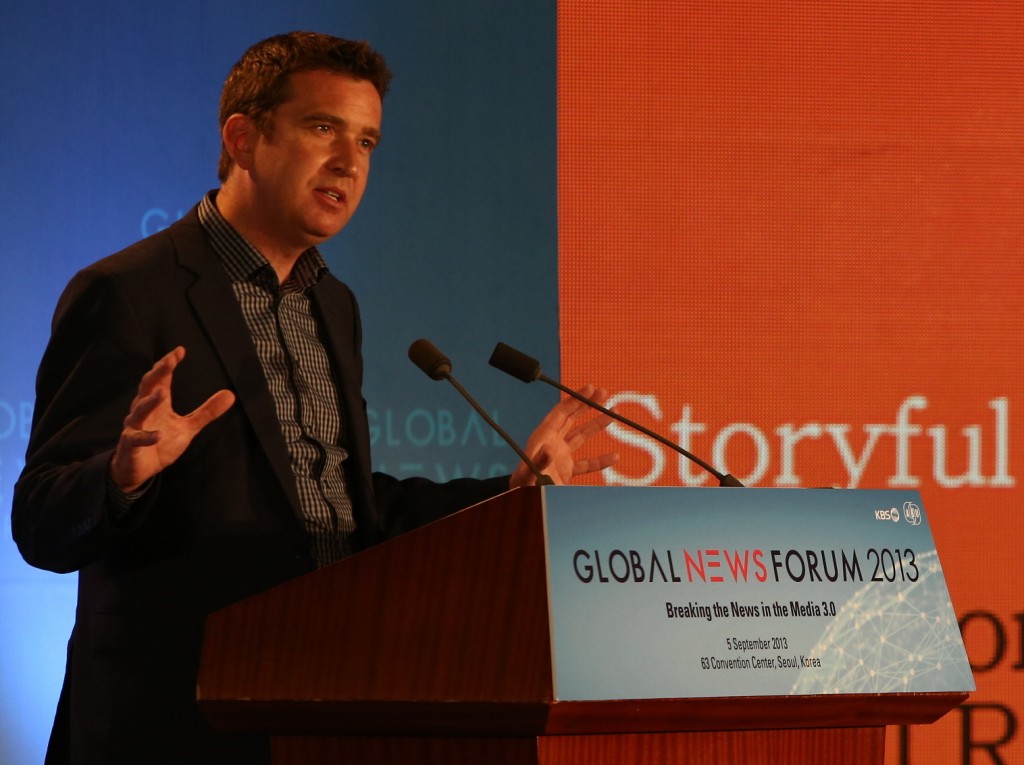 Irish journalist Mark Little quit his job as a prime time news anchor in late 2009 to found Storyful, a news service with a twist. Like traditional news agencies, Storyful delivers news content to media organizations. The novelty is that this content is culled from social media networks such as Twitter, YouTube and Facebook. Storyful journalists comb social media networks for interesting or dramatic videos, photos or other items. The information is then verified and put into context before being made available to the company’s subscribers (see here for how Storyful verifies stories from Syria).
Irish journalist Mark Little quit his job as a prime time news anchor in late 2009 to found Storyful, a news service with a twist. Like traditional news agencies, Storyful delivers news content to media organizations. The novelty is that this content is culled from social media networks such as Twitter, YouTube and Facebook. Storyful journalists comb social media networks for interesting or dramatic videos, photos or other items. The information is then verified and put into context before being made available to the company’s subscribers (see here for how Storyful verifies stories from Syria).
Three years since it was founded, Storyful has attracted some major clients, including ABC, Al Jazeera and the New York Times, and generated hundreds of articles about its innovative take on news gathering – though the company has yet to break even. DW Akademie’s Kate Hairsine talks to Mark Little about why he started up a social media news agency in the first place, his belief in journalism and why he thinks journalists can make great entrepreneurs.
![]() read more
read more
Distant witness: NPR’s Andy Carvin tweeting news and revolutions
 Andy Carvin is a senior strategist at National Public Radio (NPR) and leads their social media strategy. He describes himself as a “real-time informational DJ and occasional journalist, but not a social media guru”, although many would regard him as just that.
Andy Carvin is a senior strategist at National Public Radio (NPR) and leads their social media strategy. He describes himself as a “real-time informational DJ and occasional journalist, but not a social media guru”, although many would regard him as just that.
Andy Carvin’s Twitter feed @acarvin is regarded as essential for following breaking news events, particularly in the Middle East. Carvin has some 88,000 followers on Twitter. But it’s his method of aggregating, filtering and verifying news sources through social media that has attracted global attention.
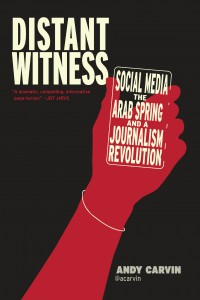 Carvin’s new book Distant Witness (CUNY Journalism Press) explores how social media and the Arab Spring have caused a revolution in journalism. It’s essential reading for journalists. Not only does Carvin tell a compelling story, interwoven with gripping Tweets, he offers insight into citizen journalism and how news organisations can use social media effectively. As Carvin puts it: “storytelling has entered new territory”.
Carvin’s new book Distant Witness (CUNY Journalism Press) explores how social media and the Arab Spring have caused a revolution in journalism. It’s essential reading for journalists. Not only does Carvin tell a compelling story, interwoven with gripping Tweets, he offers insight into citizen journalism and how news organisations can use social media effectively. As Carvin puts it: “storytelling has entered new territory”.
From the overthrow of President Ben Ali in Tunisia in 2011, Carvin explains how he was able to build upon his own knowledge of the Tunisian blogosphere, and develop a network of reliable sources on Twitter. But when he needed help for translations or to verify sources such as videos on YouTube, Carvin called for volunteers from his Twitter followers.
This method Carvin writes, “increases the chances of me getting a fast response, it also lets me cross-reference translations from multiple people, improving the overall accuracy.”
For Carvin, Tunisia would be the start of an extraordinary period of live tweeting revolutions and protests across the Arab world.
“And we had witnessed it online, from start to finish, not through the lens of mainstream media, but through protestors themselves.”
Deutsche Welle’s Rachel Baig asked Andy Carvin about citizen journalism and working as a “living, breathing real-time verification” machine.
![]() read more
read more
Tweets help visualize information density of African cities
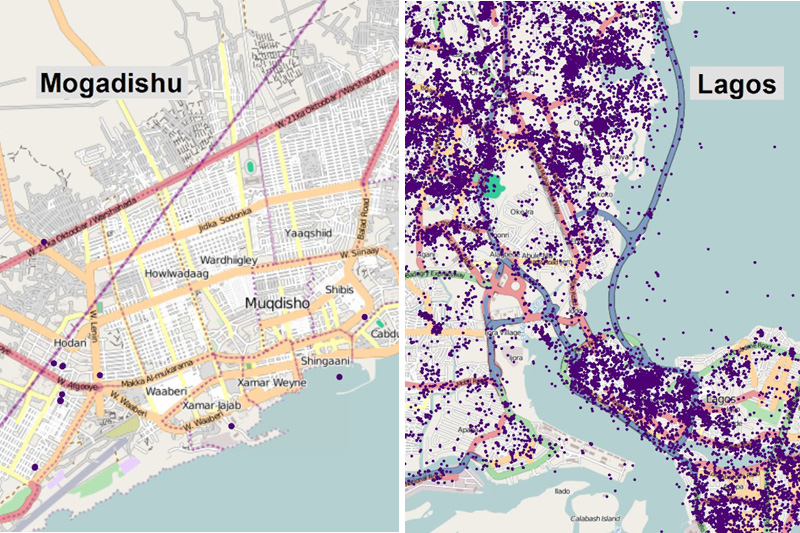
Cities are more than a collection of streets and houses or people and plants. “Cities have become both digital and digitized”, says Mark Graham, Director of Research and a Research Fellow at the Oxford Internet Institute. These days an indicator of the development of a modern city is not just its physical infrastructure.
In dozens of cities across Africa, Graham has produced a visualization of geocoded Tweets. And an interesting pattern emerges, showing the footprint of internet penetration and the use of mobile devices. While in cities such as Nairobi, Cairo or Cape Town you can see important information hubs, other cities such as Mogadishu and Addis Ababa remain almost completely blank.
![]() read more
read more
What role did social media really play in Egypt’s Arab Spring uprising?
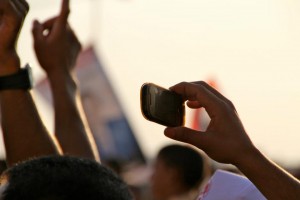 The words ‘Facebook revolution’ come up in virtually every discussion of the protests and political upheavals that swept the Arabic world at the end of 2010 and early 2011. Opinion is still divided though about the exact role that social media played in sparking and sustaining the Arab revolutions. Now, in research that took her to Egypt to extensively interview activists involved in the uprising there, a DW Akademie International Media Studies student has some surprising conclusions on the topic. DW Akademie spoke to Eira Martens about her research.
The words ‘Facebook revolution’ come up in virtually every discussion of the protests and political upheavals that swept the Arabic world at the end of 2010 and early 2011. Opinion is still divided though about the exact role that social media played in sparking and sustaining the Arab revolutions. Now, in research that took her to Egypt to extensively interview activists involved in the uprising there, a DW Akademie International Media Studies student has some surprising conclusions on the topic. DW Akademie spoke to Eira Martens about her research.
![]() read more
read more
A guide for journalists to get the most out of Twitter
 Twitter is a great tool to promote your stories and enhance your online identity. Treat your Twitter account as your business card. It should look professional, individual and cool.
Twitter is a great tool to promote your stories and enhance your online identity. Treat your Twitter account as your business card. It should look professional, individual and cool.
That’s why it’s important to customize your Twitter page. If you have a personal blog, see to it that the colors are alike and that you use the same profile photo.
And yes, it is absolutely imperative that you upload a good-looking photo of yourself. Standard red and orange eggs aren’t likely to make a good impression on your audience. If you want them to mind you, you first have to mind them, right? So upload a photo.
![]() read more
read more




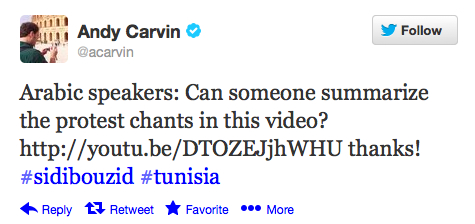




Feedback